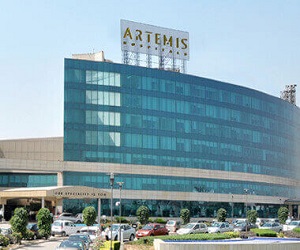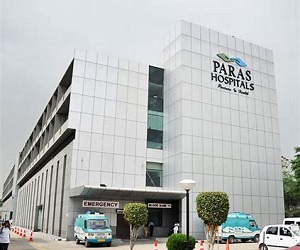Is pulmonary fibrosis fatal? Here are some true facts.
Is pulmonary fibrosis fatal? Here are some true facts.
Pulmonary fibrosis involves scarring of the lungs causing thickening of the lung tissues. This causes difficulty in breathing for the patient by inhibiting the ability of the lungs to provide ample amount of oxygen to the blood. Pulmonary fibrosis is an irreversible process. However, the medications and other therapies can help relieve the symptoms to provide a better quality of life. In the most severe cases, a lung transplant may also be an option.
Get Opinion From Doctor
What are the signs and symptoms of pulmonary fibrosis?
The most common symptoms consist are as follows. A person experiencing these kinds of symptoms must consult the doctor.
Shortness of breath
The patient has a fast and shallow breath
Dry frequent cough
Wheezing
Weight loss
Muscle and joint aches
Clubbing of fingers and toes (rounding of the tips)
Loss of appetite
Chest discomfort
lung fibrosis
Causes
There are several kinds of possible reason that can eventually lead to pulmonary fibrosis. These are,
Environmental Factors- Several environmental factors such as the silica dust, coal dust, grain dust, dust from hard metals, asbestos fibers etc. might be responsible for pulmonary fibrosis, when a person is exposed for a long time. Moreover, people working in the industries which are poorly ventilated and are filled with excessive smoke are more prone to the pulmonary fibrosis and other lung conditions.
Medical conditions – There are several medical conditions that make a person at more risk than others. These conditions may involve such as,
Sarcoidosis
Wegener’s granulomatosis
Rheumatoid arthritis
Long-standing GERD
Scleroderma
Sjogren’s syndrome
Viral infections
Dermatomyositis
Polymyositis
Mixed connective tissue disease
Pneumonia
Lupus erythematosus
Sarcoidosis
Chronic interstitial pneumonitis
Pneumoconioses
3. Radiation therapy – increased exposure to the ionizing radiation that is given for lung cancer, breast cancer or lymphomas. Usually, in such cases, pulmonary fibrosis starts with radiation pneumonitis, which is left untreated for a long time.
4. Genetics – Sometimes, the pulmonary fibrosis runs in the families for years and keeps passing on to the next generations.
5. Medications – Certain drugs can also have a damaging impact on the lungs. These medications may include,
Chemotherapy drugs, which are made to destroy cancer cells can also kill the respiratory cells.
The drugs that are used to treat arrhythmias like amiodarone can damage the lung.
Certain antibiotics like nitrofurantoin or ethambutol.
Some of the anti-inflammatory drugs like rituximab or sulfasalazine.
How is it treated?
The condition cannot be reversed to the normal condition. Hence the treatment options focus to relieve the symptoms. The treatment options include:
Medications
Oxygen therapy
Pulmonary rehabilitation
Lung transplantation
Medications
The doctors usually recommend following medications for the treatment for pulmonary fibrosis. These include,
nintedanib – This is an anti-fibrotic drug, which works by stopping the excessive production of growth factors. The side-effects may include abdominal pain, vomiting, nausea, weight loss, raised blood pressure and many more.
pirfenidone – This is anti-fibrotic as well as anti-inflammatory drug, which is known to slow down the progression of pulmonary fibrosis from mild to moderate.
Corticosteroids -These suppress the immune system and reduce the inflammation. Their mechanism of action involves mimicry of the cortisol action, which is a hormone produces by adrenal glands.
Cyclophosphamide -This is a chemotherapeutic agent that reduces the inflammation. It is used to treat certain forms of pulmonary fibrosis. The side effects include loss of appetite, inability to menstruate, change in the skin color etc.
Oxygen therapy
The oxygen therapy is recommended by the doctors when the oxygen level decrease below 88%. The oxygen levels are measured while sitting, during walking, on a treadmill, and during sleep. Wearing an oxygen mask is not very convenient. It can get difficult to adjust it while you are outside the home. However, it is a highly effective method to reduce the short breath and fatigue. Many patients have reported having experienced a more active lifestyle than before.
oxygen therapy
Pulmonary rehabilitation
Pulmonary rehabilitation involves training related to breathing exercises, management of stress, anxiety, stress, and depression. The primary goal is to refurbish the lung function and enable the patient to exercise without much breathlessness. A pulmonary rehabilitation team is a vast group of nurses, respiration therapists, physiotherapist, and others. It also offers several advantages including improving the functioning of the respiratory system, relieving the symptoms and improvement in overall health. It is well-known in preventing the breathlessness and the continuous cough.
Lung Transplant
Lung transplantation is also a choice of treatment in certain cases of pulmonary fibrosis. However, this can only be done in cases where the patient is healthy, young and suitable for the lung transplant. A lung transplant can involve major complications such as sepsis or immune-rejection by the body.
Life-expectancy in case of pulmonary fibrosis
Is pulmonary fibrosis fatal? Here are some true facts.
Pulmonary fibrosis involves scarring of the lungs causing thickening of the lung tissues. This causes difficulty in breathing for the patient by inhibiting the ability of the lungs to provide ample amount of oxygen to the blood. Pulmonary fibrosis is an irreversible process. However, the medications and other therapies can help relieve the symptoms to provide a better quality of life. In the most severe cases, a lung transplant may also be an option.
What are the signs and symptoms of pulmonary fibrosis?
The most common symptoms consist are as follows. A person experiencing these kinds of symptoms must consult the doctor.
Shortness of breath
The patient has a fast and shallow breath
Dry frequent cough
Wheezing
Weight loss
Muscle and joint aches
Clubbing of fingers and toes (rounding of the tips)
Loss of appetite
Chest discomfort
lung fibrosis
Causes
There are several kinds of possible reason that can eventually lead to pulmonary fibrosis. These are,
Environmental Factors- Several environmental factors such as the silica dust, coal dust, grain dust, dust from hard metals, asbestos fibers etc. might be responsible for pulmonary fibrosis, when a person is exposed for a long time. Moreover, people working in the industries which are poorly ventilated and are filled with excessive smoke are more prone to the pulmonary fibrosis and other lung conditions.
Medical conditions – There are several medical conditions that make a person at more risk than others. These conditions may involve such as,
Sarcoidosis
Wegener’s granulomatosis
Rheumatoid arthritis
Long-standing GERD
Scleroderma
Sjogren’s syndrome
Viral infections
Dermatomyositis
Polymyositis
Mixed connective tissue disease
Pneumonia
Lupus erythematosus
Sarcoidosis
Chronic interstitial pneumonitis
Pneumoconioses
3. Radiation therapy – increased exposure to the ionizing radiation that is given for lung cancer, breast cancer or lymphomas. Usually, in such cases, pulmonary fibrosis starts with radiation pneumonitis, which is left untreated for a long time.
4. Genetics – Sometimes, the pulmonary fibrosis runs in the families for years and keeps passing on to the next generations.
5. Medications – Certain drugs can also have a damaging impact on the lungs. These medications may include,
Chemotherapy drugs, which are made to destroy cancer cells can also kill the respiratory cells.
The drugs that are used to treat arrhythmias like amiodarone can damage the lung.
Certain antibiotics like nitrofurantoin or ethambutol.
Some of the anti-inflammatory drugs like rituximab or sulfasalazine.
How is it treated?
The condition cannot be reversed to the normal condition. Hence the treatment options focus to relieve the symptoms. The treatment options include:
Medications
Oxygen therapy
Pulmonary rehabilitation
Lung transplantation
Medications
The doctors usually recommend following medications for the treatment for pulmonary fibrosis. These include,
nintedanib – This is an anti-fibrotic drug, which works by stopping the excessive production of growth factors. The side-effects may include abdominal pain, vomiting, nausea, weight loss, raised blood pressure and many more.
pirfenidone – This is anti-fibrotic as well as anti-inflammatory drug, which is known to slow down the progression of pulmonary fibrosis from mild to moderate.
Corticosteroids -These suppress the immune system and reduce the inflammation. Their mechanism of action involves mimicry of the cortisol action, which is a hormone produces by adrenal glands.
Cyclophosphamide -This is a chemotherapeutic agent that reduces the inflammation. It is used to treat certain forms of pulmonary fibrosis. The side effects include loss of appetite, inability to menstruate, change in the skin color etc.
Oxygen therapy
The oxygen therapy is recommended by the doctors when the oxygen level decrease below 88%. The oxygen levels are measured while sitting, during walking, on a treadmill, and during sleep. Wearing an oxygen mask is not very convenient. It can get difficult to adjust it while you are outside the home. However, it is a highly effective method to reduce the short breath and fatigue. Many patients have reported having experienced a more active lifestyle than before.
oxygen therapy
Pulmonary rehabilitation
Pulmonary rehabilitation involves training related to breathing exercises, management of stress, anxiety, stress, and depression. The primary goal is to refurbish the lung function and enable the patient to exercise without much breathlessness. A pulmonary rehabilitation team is a vast group of nurses, respiration therapists, physiotherapist, and others. It also offers several advantages including improving the functioning of the respiratory system, relieving the symptoms and improvement in overall health. It is well-known in preventing the breathlessness and the continuous cough.
Lung Transplant
Lung transplantation is also a choice of treatment in certain cases of pulmonary fibrosis. However, this can only be done in cases where the patient is healthy, young and suitable for the lung transplant. A lung transplant can involve major complications such as sepsis or immune-rejection by the body.
Life-expectancy in case of pulmonary fibrosis
The overall prognosis of pulmonary fibrosis depends upon several factors related to the patient. The best pulmonologists in India say that since there is no absolute cure for the condition, the quality of life will depend upon the treatment and lifestyle changes made by the patient. For example, if the patient has been a smoker all his life and also continues to smoke after the diagnosis of pulmonary fibrosis. It also depends on if the patient is eating healthy, doing regular breathing exercises and if he is on pulmonary rehabilitation.
Proper care with complete treatment can help to extend the life expectancy of a person
Proper care with complete treatment can help to extend the life expectancy of a person






